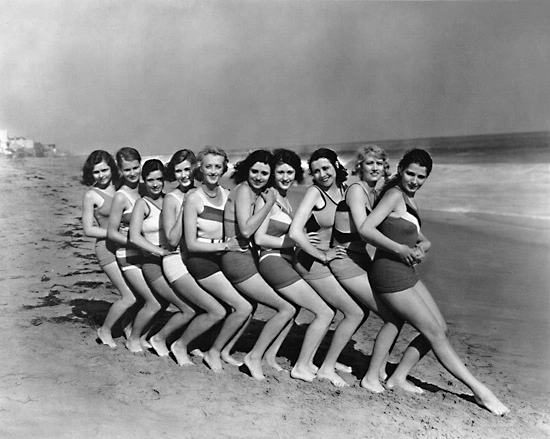The bikini, a two-piece swimsuit that has become a symbol of beach culture and women’s liberation, has a fascinating history that reflects societal attitudes towards fashion, femininity, and body image. This essay explores the origins, evolution, and cultural impact of the bikini, tracing its journey from scandalous controversy to an iconic fashion statement.
- Origins of the Bikini: The bikini’s history can be traced back to ancient civilizations, where depictions of women wearing two-piece garments can be found in Roman mosaics and ancient Roman murals. However, it was not until the mid-20th century that the bikini as we know it today came into existence. French engineer Louis Réard and fashion designer Jacques Heim are credited with introducing the modern bikini in 1946.
- Scandal and Controversy: Upon its introduction, the bikini faced significant backlash and was deemed scandalous. Its daring design, which exposed the midriff and emphasized the female form, challenged societal norms and conservative notions of modesty. The bikini was even banned in several countries, including Spain and Italy. However, this controversy only fueled public curiosity and propelled the bikini into the spotlight.
- Pop Culture and Hollywood Influence: The bikini’s popularity skyrocketed in the 1950s, largely due to its association with Hollywood and glamorous film stars. Iconic images of actresses like Brigitte Bardot, Marilyn Monroe, and Ursula Andress wearing bikinis in films such as “And God Created Woman” and “Dr. No” helped to normalize and popularize the bikini as a symbol of sensuality and allure.
- Body Positivity and Empowerment: In the 1960s and 1970s, the bikini became a symbol of women’s liberation and body positivity. It represented a shift away from restrictive and modest swimwear towards embracing one’s body and celebrating personal freedom. The bikini empowered women to embrace their sexuality and challenge societal expectations, paving the way for a more inclusive and diverse representation of beauty.
- Fashion and Design Evolution: Over the years, the bikini has undergone various design transformations to cater to changing fashion trends and individual preferences. From string bikinis to bandeau tops, high-waisted bottoms to thong styles, the bikini has evolved to accommodate different body types and fashion sensibilities. Designers continue to push boundaries with innovative cuts, patterns, and materials, keeping the bikini at the forefront of swimwear fashion.
- Cultural Acceptance and Global Influence: Today, the bikini is widely accepted and embraced as a staple in swimwear fashion across the globe. It has transcended cultural barriers and become a symbol of beach culture, leisure, and relaxation. The bikini represents freedom, self-expression, and the celebration of diverse body shapes and sizes. It has become an inclusive garment, with options available for people of all genders and ages.
The history of the bikini is a testament to the ever-changing societal attitudes towards fashion, femininity, and body image. From its scandalous beginnings to its current status as an empowering fashion statement, the bikini has played a significant role in challenging traditional norms and promoting body positivity. It has become a symbol of liberation, self-confidence, and cultural acceptance. As we move forward, the bikini will continue to evolve, reflecting the ever-changing landscape of fashion and the ongoing pursuit of body inclusivity and empowerment.



